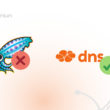Projects in the area of technology, focused on information security and IT governance, can vary greatly in relation to their size, complexity and financial investment. Therefore, whenever your company begins the implementation of a new project, the size of the company, its maturity in relation to the use of technology resources, technical availability and human resources for execution and the budget available for investment, should be evaluated.
From this context, we have directed our analysis to the small and medium -sized market, which increasingly also need to have security in their information and good IT resources management. We realized a difficulty in evaluating the return on investment in the sense of enabling the execution of these projects. This is because, often the return is not perceived because there are no follow -up metrics regarding the performance of systems, availability of IT resources, occurrences of security failures or data loss and follow -up of team and employees productivity through technology.
This lack of management metrics focused on technology and resource use can often hide bottlenecks that compromise your company's competitiveness and results, such as high equipment maintenance costs, compromise on performing tasks due to frequent equipment or systems that stops working, low time productivity due to the use of the internet and personal phones by employees, not to mention the risks that the loss of data from the company or customers or customers. represent.
Thus, we will address the benefits generated for companies, from a good information security policy and IT governance.
Importance of Information Security
The first point to consider is the reasons why companies need safety, which can be distinct and in some cases complement each other.
Some companies implement information security policies for the need to adapt to regulatory standards, often applied to the company's sector, such as financial institutions or accounting companies. In such cases, the value is fully related to the need to protect financial, accounting and customer data. As the need to meet the standards is a requirement, investment in information security is part of the basic costs of the business and should be part of the company's strategic planning.
For companies that have units and or distributed operation, the greatest need becomes the availability of information between the units and the security in communication between them. It is common for branches to be connected with the matrix via management systems and that through this communication travel confidential data from the business. In these scenarios information security gains a lot of importance, as it needs to ensure permanent availability of information and at the same time ensure that data cannot be intercepted. To estimate the value of security, one can consider the cost of lack of communication between units, where business activities cannot be performed, often compromising purposes, such as sales and customer service.
In the context of small and medium-sized companies, where the need for business information security may not be so easily perceived, it should be estimated what would be the impact of business information loss or theft, such as financial or customer data.
Within these risks, we can highlight the epidemic of ransomware attacks on SME in 2016, which consists of the sequestration of data. In this article we talked a little more about ransomware and how to protect .
Still within safety, another important point is the incidence of viruses in the network and the costs generated from this problem, such as the need to maintain equipment and the idle time of employees from the unavailability of equipment and systems use.
Investing in information security is always a strategy aimed at preventing risk and losses. Therefore, when assessing the return on investment should be considered what the loss or impact that safety failures can generate to the company may be.
Some examples of follow -up and ROI metrics may be, measured the expenses generated with professionals or IT companies by maintaining systems and equipment and calculating the idle time of their employees from systems and equipment under maintenance or unavailable. Never forgetting to consider the impact that loss of information can represent on your business.
A good information security policy goes through several points, first it is necessary to guide employees about the risks and how to identify them . After that, the actions must include three complementary points:
- Prevent : Protect information storage places from access to third parties.
- Detect : quickly identify any type of attack or safety failure.
- Answer : Act efficiently in case of failures, correcting vulnerabilities and fixing affected points.
We know that a good information security policy requires planning and investment of personnel and financial resources. But it is essential that your company pay attention to this subject, evaluating the risks and implementing measures to protect yourself. Often simple and affordable measures can keep your business protected from most existing risks on the network.
Internet access management is one of these simple actions as it is possible to avoid access to harmful websites on the Internet. Access to these sites can occur in many ways, such as users by clicking fake email messages. This type of access is the largest gateway to the viruses in companies today.
Share here in the comments how your company evaluates the return on investment in information security and what you do to stay protected!












2 comments
Comments closed